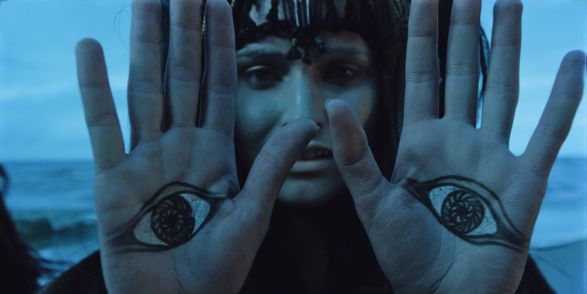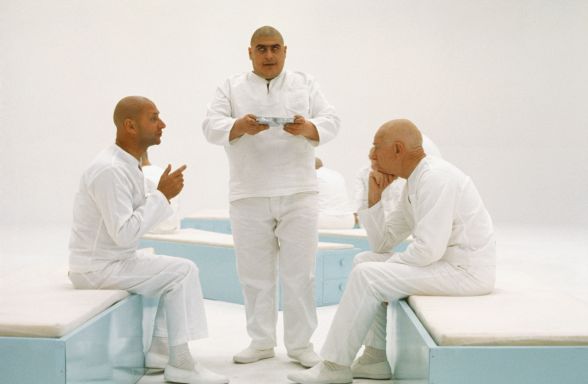
‘Na srebrnym globie’ (‘On the Silver Globe’), PL, 1978/1989, directed by Andrzej Żuławski
© Kadr Film Studio/www.sfkadr.com
Future Imperfect – Science · Fiction · Film
2017 Retrospective

Iwan Andonow in ‘Eolomea’, GDR, 1972, directed by Herrmann Zschoche
© DEFA-Stiftung / Alexander Kühn
2017 Retrospective
The Retrospective of the 67th Berlin International Film Festival is dedicated to science fiction films, one of the most visual stunning and spectacular genres in the history of film. This year’s Retrospective will showcase imaginary worlds in an imperfect future, the way the science fiction genre has conceived of them since its beginnings, with a focus on two themes – the society of the future, and the strange and Other. A total of 27 international features, including classics, cult films, and largely unknown productions from places like Japan, as well as Central and Eastern Europe will make up the 2017 Retrospective.

‘THX 1138’, USA, 1971, directed by George Lucas
© 1971 A Warner Bros. Entertainment Inc. All Rights Reserved.
The society of the future
The particular appeal of these films is that they provide us with a sensory experience of a distant future, although positive visions of that future tend to be the exception. The genre is dominated by depictions of dystopias that use pessimistic extrapolation to imbue contemporary issues with an explosive quality. The environmental dystopia portrayed in ‘Soylent Green’ (USA, 1973, directed by Richard Fleischer), for instance, is the result of over-population and environmental pollution. Using a muted colour palette, it depicts a world in which there is intense competition for water, food, and accommodations, and humans are recycled like trash. Central to the sci-fi genre are storylines dealing with totalitarian systems and omnipresent surveillance, such as in the first film version of George Orwell’s famous novel ‘1984’ (GB/USA, 1956, directed by Michael Anderson). Director George Lucas’ memorable vision of a technocratic future in ‘THX 1138’ (USA, 1971) is a highly efficient and fully automated society, in which the emotions and free will of the individual are suppressed with medication. Another sub-genre are post-apocalyptic films where the Earth has become uninhabitable. In ‘O-bi, o-ba: Koniec cywilizacji’ (‘O-bi, O-ba: The End of Civilization’, PL, 1985, directed by Piotr Szulkin), the survivors of a nuclear holocaust have retreated to a life underground. When all civilized order has been annihilated, violence and chaos rule; but new forms of community also emerge.

‘Uchūjin Tōkyō ni Arawaru’ (‘Warning from Space’), J, 1956, directed by Kōji Shima
© Kadokawa Corporation 1956
The Other
Another ubiquitous theme in science fiction films is the alien or unknown Other. The genre is replete with scenarios that have humans coming into contact with extraterrestrial life forms, and ideas about what the aliens might look like and how they live. The Danish silent film ‘Himmelskibet’ (‘A Trip to Mars’) by Holger-Madsen premiered in 1918, making it one of the earliest science fiction films ever shot. It conjures up a very peaceful vision of a Mars expedition and the encounter with the life forms who live there. Other friendly-seeming alien races include the starfish-shaped extraterrestrials in ‘Kōji Shima’s Uchūjin Tōkyō ni Arawaru’ (‘Warning from Space’, J, 1956) and the childlike creatures in Steven Spielberg’s ‘Close Encounters of the Third Kind’ (USA, 1977). The genre classic ‘The War of the Worlds’ (USA, 1953, directed by Byron Haskin), by contrast, is a perfect example of the threatening alien invasion from space storyline. But the Other can also surface within human society or even within the individual. Artificial intelligence, androids, and robots raise the issue of the difference between men and machines. That is explored in a gloomy, merciless manner in Marek Piestrak’s ‘Test Pilota Pirxa’ (‘Pilot Pirx’s Inquest’, PL/USSR, 1979).